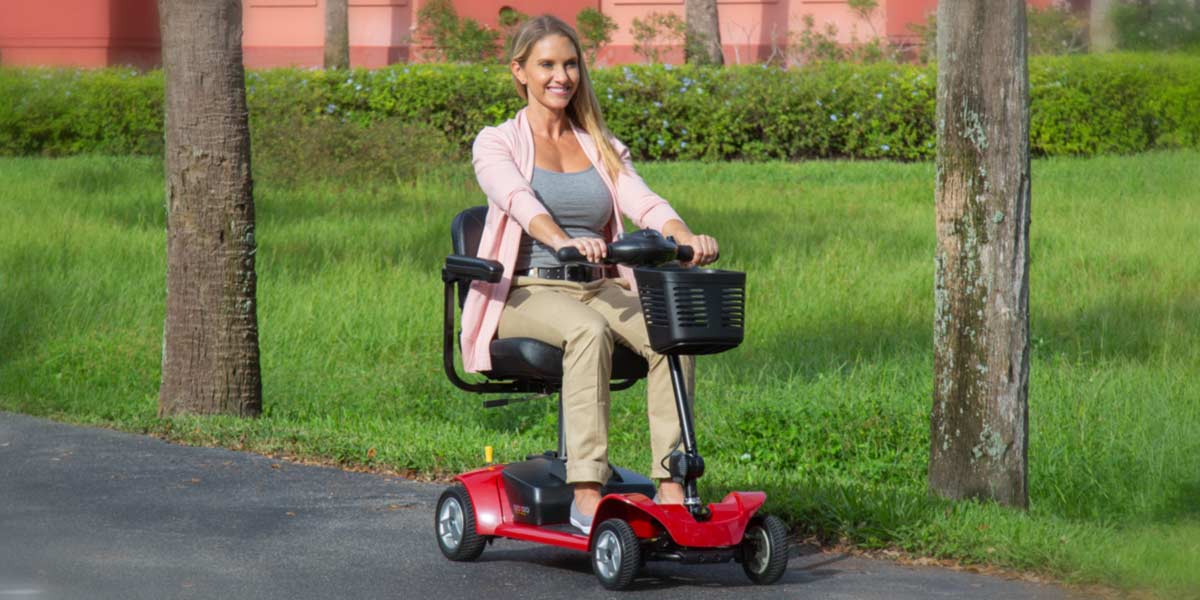Mobility scooters have become essential tools for individuals with mobility challenges, providing newfound independence and freedom. As technological advancements continue to shape the landscape of assistive devices, mobility scooters have evolved from simple electric chairs to sophisticated, customizable vehicles. This article explores the history, functionalities, benefits, challenges, and future innovations of mobility scooters, shedding light on the transformative role they play in enhancing the quality of life for many individuals.
I. A Historical Perspective:
The concept of mobility aids for individuals with limited mobility can be traced back to the mid-20th century. Early devices were basic electric chairs with limited features, primarily designed for indoor use. Over time, these devices evolved into what we now recognize as modern mobility scooters, incorporating better design, battery technology, and enhanced functionality.
II. Functionality and Types of Mobility Scooters:
- Classifications: Mobility scooters are typically categorized based on their design and functionality. Class 2 scooters are designed for pavement use, while Class 3 scooters can legally be used on roads. Additionally, scooters can be divided into three-wheeled and four-wheeled variants, each offering specific advantages depending on the user’s needs and preferences.
- Electric Power and Batteries: Most mobility scooters are powered by rechargeable batteries. Advances in battery technology have led to increased range and efficiency, allowing users to travel longer distances on a single charge. Lithium-ion batteries, in particular, have become popular for their lightweight design and high energy density.
- Controls and Customization: Modern mobility scooters come equipped with user-friendly controls, often designed for individuals with limited dexterity or strength. Additionally, many models offer customization options, allowing users to adjust the height, seat position, and handlebar settings for optimal comfort.
III. Benefits of Mobility Scooters:
- Enhanced Independence: Mobility scooters are a game-changer for individuals with mobility impairments, providing them with the ability to navigate their surroundings independently. This increased autonomy fosters a sense of empowerment and reduces reliance on others for transportation.
- Improved Quality of Life: The ability to move freely and participate in daily activities significantly improves the overall quality of life for scooter users. Whether it’s shopping, socializing, or enjoying outdoor activities, mobility scooters facilitate a more active and engaged lifestyle.
- Physical and Mental Well-being: Regular mobility promotes physical activity, which is crucial for maintaining overall health. The mental health benefits are equally significant, as increased mobility reduces feelings of isolation and fosters a sense of community involvement.
IV. Challenges and Considerations:
- Accessibility: While mobility scooters enhance accessibility for many individuals, challenges related to infrastructure and public spaces still exist. Inadequate ramps, narrow doorways, and lack of accessible public transportation can limit the freedom of scooter users.
- Cost and Insurance Coverage: High-quality mobility scooters can be a significant investment, and insurance coverage may vary. Access to affordable options and comprehensive insurance plans is crucial to ensure that individuals who need mobility scooters can access them without financial strain.
- Maintenance and Repairs: Like any mechanical device, mobility scooters require regular maintenance and occasional repairs. Accessibility to affordable and timely service is essential to ensure the longevity and reliability of these devices.

V. Innovations and Future Trends:
- Smart Mobility Scooters: The integration of smart technologies into mobility scooters is an emerging trend. Features such as GPS navigation, connectivity with mobile apps, and sensors for obstacle detection contribute to enhanced safety and user experience.
- Lightweight and Foldable Designs: Advances in materials and engineering have led to the development of lightweight and foldable mobility scooters. These designs are particularly beneficial for users who need a portable solution, enabling them to easily transport their scooters in vehicles or store them in compact spaces.
- Environmental Sustainability: With an increasing focus on sustainability, manufacturers are exploring eco-friendly alternatives for mobility scooters. This includes the use of recyclable materials, energy-efficient components, and eco-conscious manufacturing processes.
VI. Case Studies:
- Pioneering Companies: Companies like Pride Mobility and Invacare have been at the forefront of developing innovative mobility solutions. Pride Mobility’s Jazzy line, for example, offers a range of power chairs and scooters with advanced features, while Invacare’s Comet series focuses on outdoor performance and durability.
- Global Initiatives: Various initiatives around the world aim to improve accessibility and promote the use of mobility scooters. Cities are implementing infrastructure changes, such as accessible sidewalks and ramps, to accommodate scooter users. Additionally, non-profit organizations and advocacy groups are working to raise awareness about the needs of individuals with mobility challenges.
VII. The Role of Healthcare Professionals:
Healthcare professionals play a crucial role in prescribing and guiding individuals on the appropriate use of mobility scooters. Occupational therapists, in particular, assess the specific needs of individuals and recommend mobility aids, including scooters, to enhance their daily functioning.
VIII. Conclusion:
Mobility scooters have evolved from simple electric chairs to sophisticated, customizable vehicles that empower individuals with limited mobility. These devices play a vital role in enhancing independence, improving quality of life, and promoting physical and mental well-being. As technology continues to advance, the future of mobility scooters holds promise for even greater innovation, customization, and integration into smart and sustainable urban mobility solutions. By addressing challenges related to accessibility, cost, and maintenance, society can ensure that individuals with mobility challenges can fully participate in and contribute to their communities, fostering a more inclusive and equitable society.


No responses yet